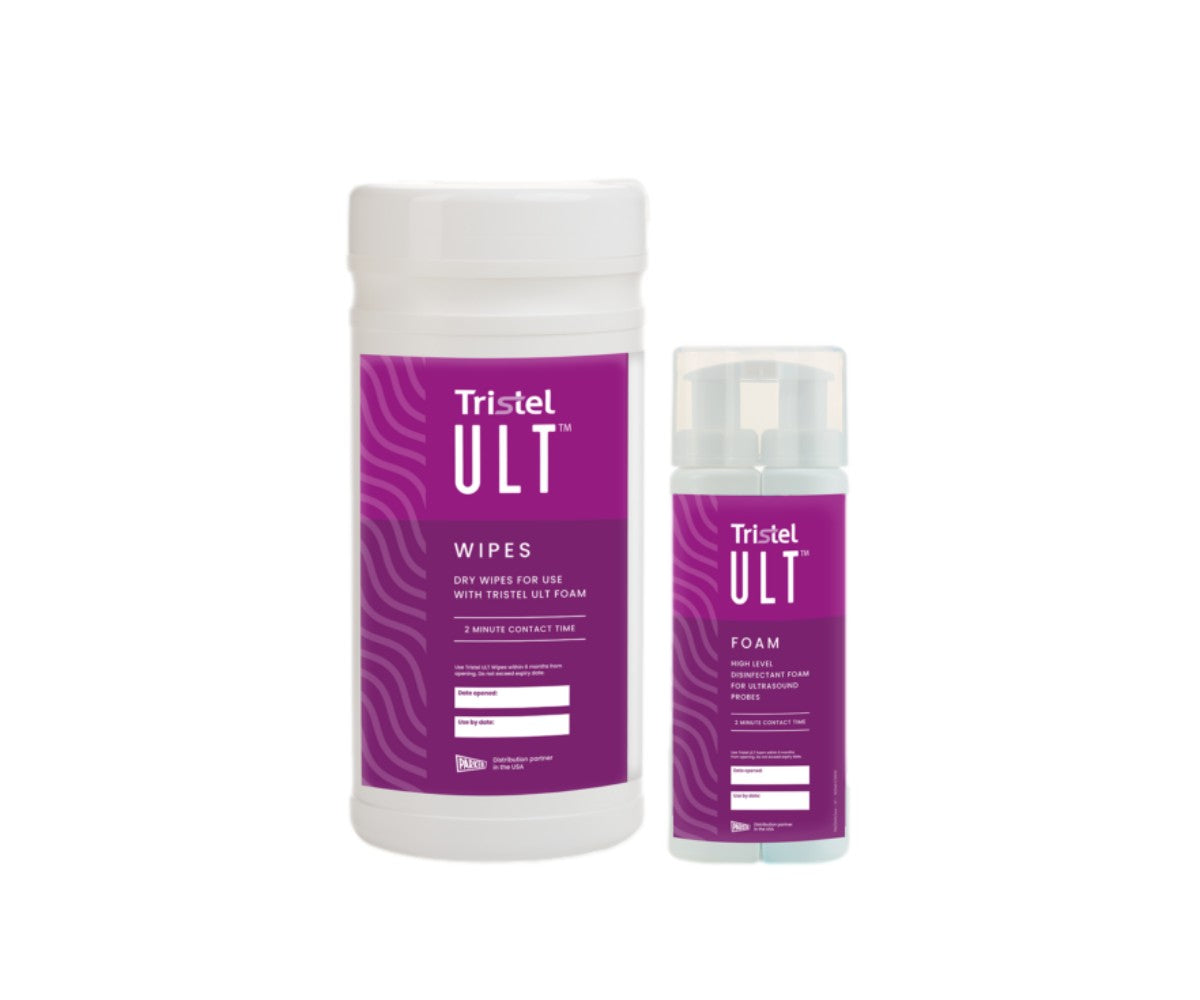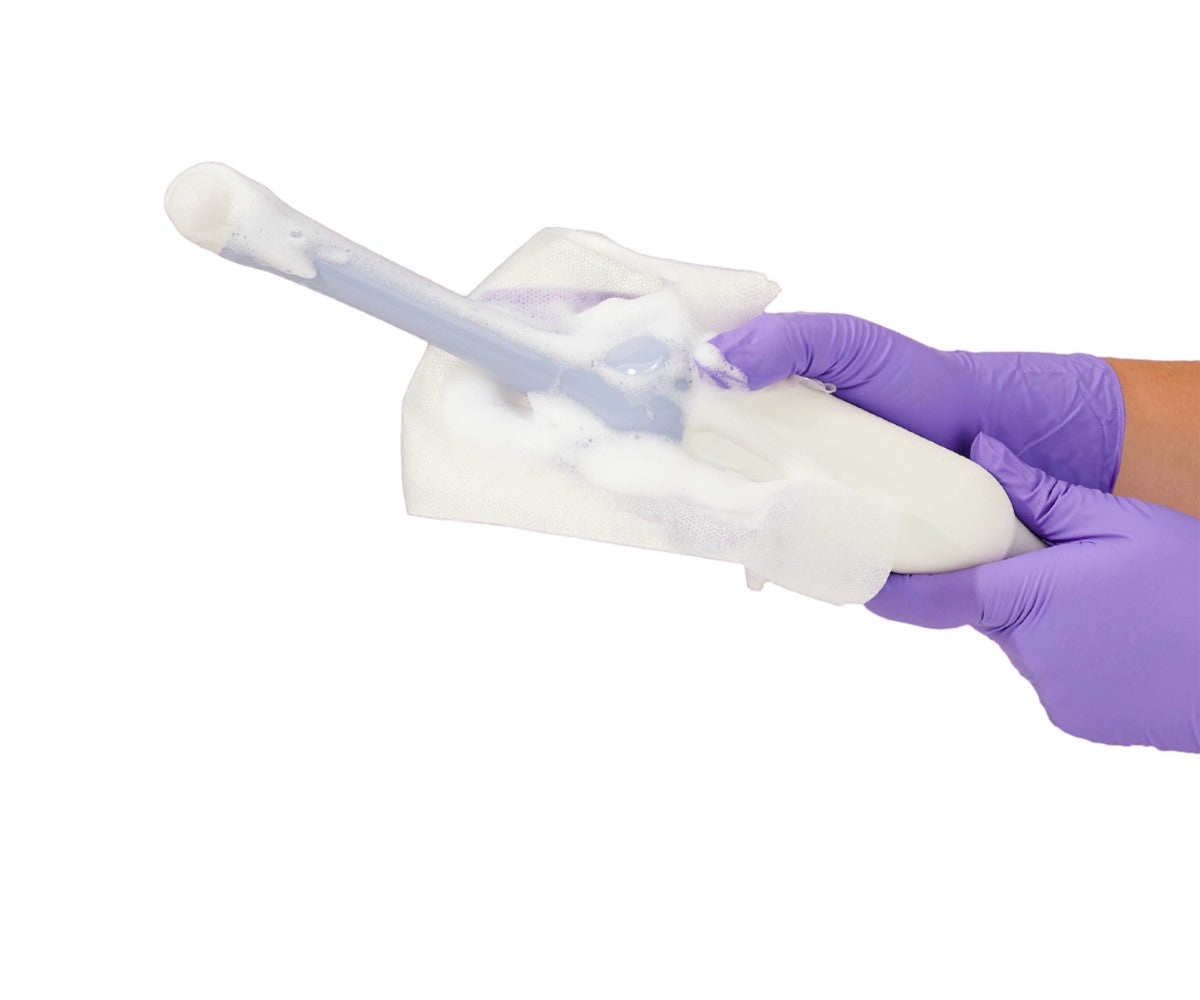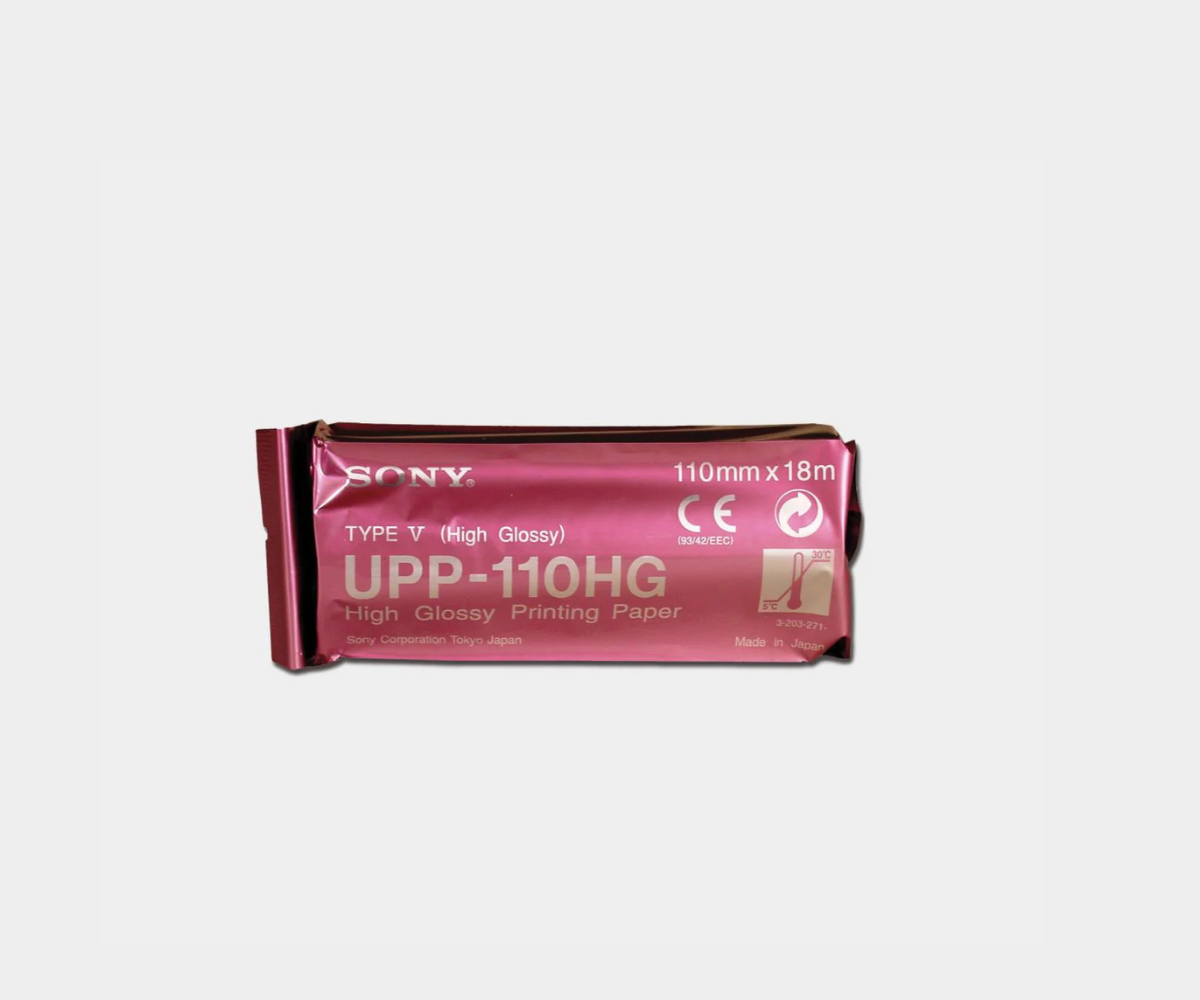Patients and medical staff face an equally viable threat of COVID-19 infection from surgical equipment and surfaces in the OR. The WHO has reported that the coronavirus can persist on surfaces for a few hours or up to a few days; therefore, the risk of cross-contamination on medical equipment is particularly high when dealing with suspected or confirmed COVID-19 cases. The first step that medical staff can take to reduce the risk of infection is to clean all surgical equipment, such as ultrasound transducers, systems, and instruments, with a hospital-grade disinfectant spray or wipe. Equipment that can undergo high-level disinfection should continue to be disinfected this way and medical staff should not attempt to replace this process with a disinfectant spray or wipe, but instead use them in tandem. Certain sprays and wipes have been tested and proven to be effective against COVID-19, such as the Parker Protex disinfectant spray, and practices should use these products when available.
Another important measure medical staff can take to prevent COVID-19 cross-contamination is to use surgical equipment drapes and bags. These sterile products are designed to prevent equipment from being contaminated through contact with infected individuals and are resistant to bodily fluids. Moreover, equipment drapes are available in a variety of sizes and configurations to fit all sorts of equipment and devices present in the OR, such as c-arms, ultrasound machines, and computers. It is important for all equipment present in a surgical setting to be protected with sterile drapes, even devices such as surgical displays should be covered to reduce the chance of any cross-contamination. Putting these strict measures into practice will bolster infection control efforts and minimize the chances of infection being present on surfaces in the OR.
In the case of ultrasound-guided procedures, physicians can protect the transducer and the patient by using a sterile probe cover. In a similar fashion to surgical equipment drapes, these probe covers prevent the contamination of the transducer through contact with individuals infected with COVID-19. They are available for endocavity procedures, such as transrectal and transvaginal exams, as well as surface procedures. It is important to note that utilizing a probe cover does not replace proper disinfection and medical staff should always follow a strict disinfection protocol after each patient use, especially when operating or examining a patient with COVID-19. Learn more about which probe cover is suitable for your procedure here.







